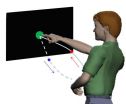(Press-News.org) WASHINGTON (Dec. 1 2014) -- For patients in cardiac arrest, administering epinephrine helps to restart the heart but may increase the overall likelihood of death or debilitating brain damage, according to a study published today in the Journal of the American College of Cardiology.
The study offers new data in an ongoing debate over the risks and benefits of using epinephrine to treat cardiac arrest, an often-fatal condition in which the heart stops beating. Epinephrine, also known as adrenaline, is a hormone that stimulates the heart and promotes the flow of blood. Current international guidelines recommend administering 1 milligram of epinephrine every 3-5 minutes during resuscitation.
"The role of epinephrine is more and more questionable in cardiac arrest," said the study's lead author Florence Dumas, M.D., Ph.D., of the Parisian Cardiovascular Research Center in France. "We need to constantly assess our procedures and protocols to make sure that the use of epinephrine is effective and done at the correct time."
She added that this study underscores the need for caution when using epinephrine. Administering epinephrine to patients in cardiac arrest has been shown to improve the chance of restarting the heart, known as return of spontaneous circulation or ROSC. But the new study adds to mounting evidence suggesting the drug harms patients' chances of surviving past the post-resuscitation period with brain function intact.
Dumas and colleagues analyzed hospital records for more than 1,500 people admitted to a large Parisian hospital over a 12-year period. Patients included in the analysis had suffered out-of-hospital cardiac arrest, been resuscitated and achieved ROSC. Nearly three-quarters of the patients had received at least one dose of epinephrine.
The primary outcome measured was discharge from the hospital with normal or only moderately compromised brain functioning. Sixty-three percent of patients who did not receive epinephrine achieved this outcome, compared to only 19 percent of those who received epinephrine.
Patients receiving higher doses of epinephrine fared worse than those with lower doses. As compared to patients who received no epinephrine, those receiving 1-milligram doses were 52 percent more likely to have a bad outcome and those receiving 5-milligram or larger doses were 77 percent more likely to have a bad outcome.
Timing also appears to be an important factor. Patients receiving epinephrine in the later stages of resuscitation were more likely to die than those who got their first epinephrine dose shortly after collapsing. The adverse effects of epinephrine appeared to be unaffected by the use of post-resuscitation medical treatments, such as techniques to cool the body to reduce tissue damage or interventions to restore the flow of blood through blocked arteries.
The patients who had not received epinephrine typically had other characteristics that improved their outlook. For example, patients in this group were generally younger and more likely to have been near a witness when they collapsed. However, the research team employed a variety of robust statistical methods to account for these differences.
Dumas said the results do not necessarily indicate an immediate need to change the guidelines, however. "It's very difficult, because epinephrine at a low dose seems to have a good impact in the first few minutes, but appears more harmful if used later," said Dumas. "It would be dangerous to completely incriminate this drug, because it may well be helpful for certain patients under certain circumstances. This is one more study that points strongly to the need to study epinephrine further in animals and in randomized trials."
In addition to further research on epinephrine, Dumas said the study reinforces the need to continue investigating other drugs and drug combinations that might offer safer alternatives to epinephrine during cardiac arrest.
Each year, more than 420,000 cardiac arrests occur in the United States. Its immediate cause is typically an abnormality in the heart's rhythm, which can result from numerous risk factors including coronary artery disease, heart attack, an enlarged heart or other heart conditions. Cardiopulmonary resuscitation and defibrillation are the primary treatments.
INFORMATION:
The American College of Cardiology is a 47,000-member medical society that is the professional home for the entire cardiovascular care team. The mission of the College is to transform cardiovascular care and to improve heart health. The ACC leads in the formation of health policy, standards and guidelines. The College operates national registries to measure and improve care, provides professional medical education, disseminates cardiovascular research and bestows credentials upon cardiovascular specialists who meet stringent qualifications. For more information, visit cardiosource.org/ACC.
The Journal of the American College of Cardiology, which publishes peer-reviewed research on all aspects of cardiovascular disease, is the most widely read cardiovascular journal worldwide. JACC is ranked No. 1 among cardiovascular journals worldwide for its scientific impact. END
Give therapists and psychiatrists information about the biology of a mental disorder, and they have less -- not more -- empathy for the patient, a new Yale study shows.
The findings released Dec. 1 in the Proceedings of the National Academy of Sciences, challenge the notion that biological explanations for mental illness boost compassion for the tens of millions of Americans who suffer from mental-health problems.
Conventional wisdom suggests that biological explanations for psychiatric symptoms should reduce the blame patients receive for their behavior by making ...
Existing age estimates of American mastodon fossils indicate that these extinct relatives of elephants lived in the Arctic and Subarctic when the area was covered by ice caps--a chronology that is at odds with what scientists know about the massive animals' preferred habitat: forests and wetlands abundant with leafy food. In a paper published this week in the Proceedings of the National Academy of Sciences, an international team of researchers is revising fossil age estimates based on new radiocarbon dates and suggesting that the Arctic and Subarctic were only temporary ...
RIVERSIDE, Calif. - Multiple sclerosis (MS), an autoimmune disease of the brain and spinal cord, affects about 2.3 million people worldwide (400,000 in the United States). Affecting more women than men, it can be seen at any age, although it is most commonly diagnosed between the ages of 20 and 40.
An unpredictable disease that disrupts the flow of information within the brain and between the brain and the body, MS is triggered when the immune system attacks the myelin sheath, the protective covering around the axons of nerve fibers. The "demyelination" that follows ...
CHAMPAIGN, Ill. -- The house mouse, stickleback fish and honey bee appear to have little in common, but at the genetic level these creatures respond in strikingly similar ways to danger, researchers report. When any of these animals confronts an intruder, the researchers found, many of the same genes and brain gene networks gear up or down in response.
This discovery, reported in the Proceedings of the National Academy of Sciences, suggests that distantly related organisms share some key genetic mechanisms that help them respond to threats, said University of Illinois ...
The rapid evolution of HIV, which has allowed the virus to develop resistance to patients' natural immunity, is at the same time slowing the virus's ability to cause AIDS, according to new research funded by the Wellcome Trust.
The study also indicates that people infected by HIV are likely to progress to AIDS more slowly - in other words the virus becomes less 'virulent' - because of widespread access to antiretroviral therapy (ART).
Both processes make an important contribution to the overall goal of the control and eradication of the HIV epidemic. In 2013, there ...
The most commonly used medications for osteoporosis worldwide, bisphosphonates, may also prevent certain kinds of lung, breast and colon cancers, according to two studies led by researchers at the Icahn School of Medicine at Mount Sinai and published today in the Proceedings of the National Academy of Sciences (PNAS).
Bisphosphonates had been associated by past studies with slowed tumor growth in some patients but not others, and the mechanism behind these patterns was unknown. In the studies published today, an international research team showed that bisphosphonates ...
Any science textbook will tell you we can't see infrared light. Like X-rays and radio waves, infrared light waves are outside the visual spectrum.
But an international team of researchers co-led by scientists at Washington University School of Medicine in St. Louis has found that under certain conditions, the retina can sense infrared light after all.
Using cells from the retinas of mice and people, and powerful lasers that emit pulses of infrared light, the researchers found that when laser light pulses rapidly, light-sensing cells in the retina sometimes get a double ...
INDIANAPOLIS and NEW BRUNSWICK, N.J. -- Imperceptible variations in movement patterns among individuals with autism spectrum disorder are important indicators of the severity of the disorder in children and adults, according to a report presented at the 2014 Society for Neuroscience annual meeting in November.
For the first time, researchers at Indiana University and Rutgers University report developing a quantitative way to assess these otherwise ignored variations in movement and link those variations to a diagnosis.
"This is the first time we have been able to explicitly ...
Two years ago, researchers at the U.S. Department of Energy's Joint BioEnergy Institute (JBEI) engineered Escherichia coli (E. coli) bacteria to convert glucose into significant quantities of methyl ketones, a class of chemical compounds primarily used for fragrances and flavors, but highly promising as clean, green and renewable blending agents for diesel fuel. Now, after further genetic modifications, they have managed to dramatically boost the E.coli's methyl ketone production 160-fold.
"We're encouraged that we could make such a large improvement in methyl ketone ...
In a remarkable collaborative effort between human and veterinary clinicians, a 29-year-old bottlenose dolphin recently underwent therapeutic bronchoscopy to treat airway narrowing, or stenosis, that was interfering with her breathing. The dolphin, a therapy animal for mentally and physically challenged children at Island Dolphin Care in Key Largo, Florida, is doing well one year after the procedure.
"Many of the medical treatments and procedures used in humans were developed and tested in animals, and many are used in the care of both," said lead author Andrew R. Haas, ...





